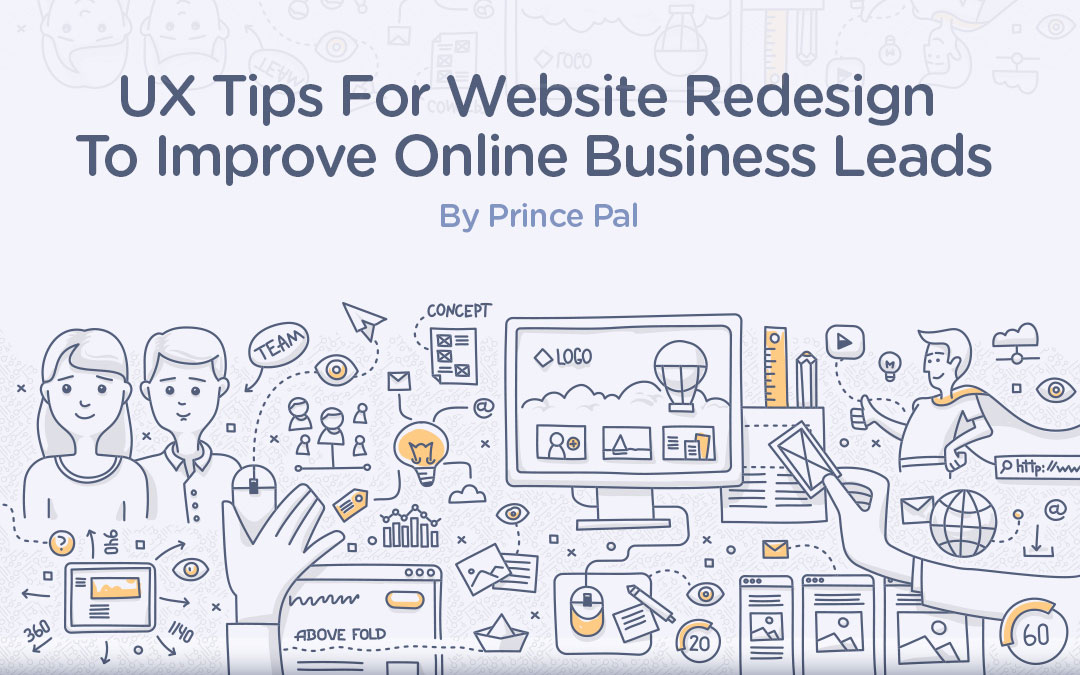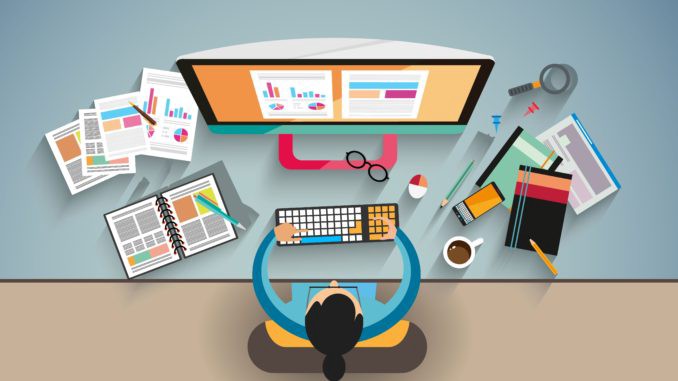Being a UI/UX expert, I have always been fascinated with the digital landscape. With my experience in the field (let’s just say, I am well seasoned), I have seen websites evolve and change and give the businesses a good run for their money. Though I must say that gaining a foothold in the digital world is not that easy. Turning a lead into conversion is what you have to nail. So, what is it that makes ‘the difference’? What is it that can change the game? The answer-An engaging user experience. The prime factor that decides the fate of the website.
User experience has an underlying power that makes things work. In fact, an outstanding UX design is the one that has a covert quality to its user experience. You don’t have to work towards it; it just automatically comes with the design. In other words, when a website’s design is smooth and without any friction, such that the users have a great time in searching for the required information, it is then when you make a go.
A design that forgoes UX will lack in usability and will definitely suffer as a result of its poor development. Even at the time of website redesign, UX (user experience) is a factor that cannot be left behind in any case. At the time of revamping, it is important to make your website more revenue-driven rather than just a glossy homepage. Redesigning must have some strategic-end goals as the reformed website, if clunky, will affect the credibility of the company. Here are some tips to get you through the website redesign process so that you can make the best changes and that too, for good.
1. Hit It With Homepage
The first impression is where the game starts. Your homepage is the first step towards engaging your users. Your homepage need not be fully packed with elements but should set the trigger for your message, branding and site navigation. The written material must be simple and crisp. There are some pages that use a screenshot of content whereas some rotate long moving designs. Opt for the homepage that suits you, but always keep the noteworthy content on the top so that it immediately captures users’ attention. There are certain standard elements that the users are pretty used to. For example, clicking on the sign in the top-left corner will take the user back to the homepage from the current page. The website homepage must always connect to the contact page, content page, about page, latest updates or blog page.
2. Rev Up With Responsive Design
Accessibility is one trend in website design that you cannot do without. Any website designed or refreshed must have a responsive design. People are always searching wherever they are- be it work or their living rooms. It is not possible to have a computer always; in that case, it is a smartphone or a tablet that comes handy. Users expect information to be accessible at all times at any device of their choice. With the internet of things, companies can look after web experience through multiple devices. The UX has become more significant than the desktop experience.
3. No-No To Copy Paste
Original rules any day. Websites are content-sensitive. Each product is different from the other. Do not try fitting in the content of an old website to a new one. By doing this, you lose the essence of the website and drift away from its purpose. Work on refreshing the visual and written material as well as the video content so as to add value to the overall design. Omit unnecessary information, rephrase your message and create new engaging content that establishes an instant connection with the audience. Consider your data and frame content that people find useful and helpful.
4. Brand Policy
Do not get carried with the latest trends. Updates are required, but not at the cost of users' needs and brand policy. If your website does not speak for your brand, pronounce your missions and goals, then there are chances that the users might not relate to it. The content and brand must complement each other else it will just be a website following the rat race. Create a harmonious product that blends the aesthetic appeal with the brand’s personality. It is the complete product that keeps the visitor hooked.
5. Creatively High
As you plan to rebuild your website, lose all your holds with creativity. Be as creative as possible and try new stuff with your design. However, it is also advisable to incorporate a calculated approach and do not misuse the craft. Consider the ideas of other people and learn as much as you can from criticism. By being vigilant in your creative pursuits you can surely refresh the website in a manner that attracts people and increase conversions.
6. SEO In Spotlight
SEO has become one of the core parameters in website design. A new or redesigned product can connect with the customers initially only with SEO. Include Google algorithms and industrial estimates so that the website enforces useful approaches and not outdated SEO techniques. Having said that, do not be overwhelmed with SEO practices. Use it, but do not go overboard. Instead of incorporating target approaches that are recognized by a search engine, most UX designers prefer utilizing content that is valuable for users and offers interactive UX.
7. Functionality Is Fundamental
It is fun to redesign the website. The entire look-and-feel of the website can get a makeover as per the latest trends, which in turn can drive the ROI and boost conversions. But wait a minute. Design is not only about aesthetics and beauty. It also serves functionality. Don’t get too excited that you end up ignoring the functionality. Make analytical decisions that give importance to site navigation and content. The main purpose should never be overlooked. If you try hurrying up with your targets, you might end up reversing and redesigning the elements.
8. Definite Goals
Do not limit yourself with the usual targets of marketing or regular objectives of improving ROI. Certainly, these are essential, but not everything. Narrow your goals so that the range and extent are known. The majority of the companies will redesign after a period of time, so it is better to go for long-term goals or timeless actions. The main use of the website should be kept in mind always. Never ever neglect the purpose. Usually, the companies have the main motive of being an informational repository for its users and popularize their services. Other aims can be to link the users to the online quote generators or attract the commerce station. Nevertheless, the race for creating a portal with the purpose of customer interactions will always be.
9. Leave Pre-Built Themes Aside
Pre-built CMS themes are perceived as an excellent way to execute redesigning. These consist of outstanding features, are cheaper than custom template development and are high in an aesthetic appeal that is beneficial for smaller businesses. Websites such as themeforest.net, envato.com, templatemonster.com, etc. offer various pre-built themes. Unlike the general notion, these readymade themes have more negatives than positives. Although they enable 100% of the pre-built features still most businesses prefer only a few of them. Having a feature load can cost the page loading time, result in code-bloat and even cause security issues. Making use of the premium templates and themes can backfire the clients and then more work has to be done to restore the loss.
10. Team To Stand Out
Designing and developing a website is a step-by-step process that involves teamwork. It is a group consisting of graphic artists, developers, strategists, marketers etc. that come together and make the project a big success. Each step needs planning and precision. Working as a team is even more important than establishing communication. It means making a systematic and detailed timeline that has a channelized and creative process. Large and complex projects are handled as per the inputs given by the members of the team. These ideas when synthesized together bring across great products.
11. Understand Your Users Well
The look-and-feel of a website is no doubt important while planning the design, but that’s just not it. Do not go too much after the aesthetic appeal. Keep in mind that the website is not designed to please you but the audience. If it doesn’t go well with the people, there are fewer chances of getting lead conversions. Lack of understanding of your users will cost you a lot. It will simply make your website a depreciating asset rather than a money-making investment. Be more rigorous in your market research and create marketing personas that are more data-driven. Know your competition well and look out for the other websites that have maximum customer interactions and high user experience.
12. Beware Of The Plugin/Module Trap
Plugins and modules are very helpful in reducing development time and enabling instant upgrades, but they are accompanied by problems too. Using these software can affect the speed of the website and further create troubles for search engines. Site speed is one of the major factors that affect the ranking on Google and other search engines, so it is advisable to use plugins or modules as few as possible. Although this additional software can enhance the functionality, it can practically crawl up the website and expose the site to many risks.
13. Avoid Stock Photography
Although quite suitable, stock photography is not the sure-shot solution for every image on a website. With large background imagery and video being the hot favorites in the web trends, it is easy to spot stock photography while viewing the websites. Stock photography is more suited for higher funnel content such as blog articles, but for lower-funnel sites like service pages, custom photography should be taken into use to create an edge against the competitors.
14. The End Is The Beginning
UX is definitely not limited. It keeps evolving with time. The more you load, the better it becomes. If you think that after launching the product, the work is over; then you are wrong. It is, in fact, the beginning. If you want to hack the ROI growth measures, you must follow up with tweaks and updates to engage your user with the website. The effect on UX may not be as per your expectations and even the response can vary. The launch is actually the starting point that sets the pace for a long-term ROI strategy. Co-ordinate with a team with whom you share the same wavelength and the one that is ready to take challenges head-on.
Wrap Up
Revamping the website requires greater creativity and caution. You must map out the changes well. After all, it is not only about looking better, but working better as well. Do proper research, go through the google analytics and website metrics and then set the goals and strategies for a redesign. Cut the clutter and include the content that influences the buyer’s behavior and serve all their info needs. Use a responsive design that fits into all the screen sizes and create a clear route from search to purchase.
Remember to give utmost importance to UX and functionality as it plays a major role in interaction with the product. Hope these tips keep you away from botched redesigns and give you a pleasant surprise in your website traffic reports.



